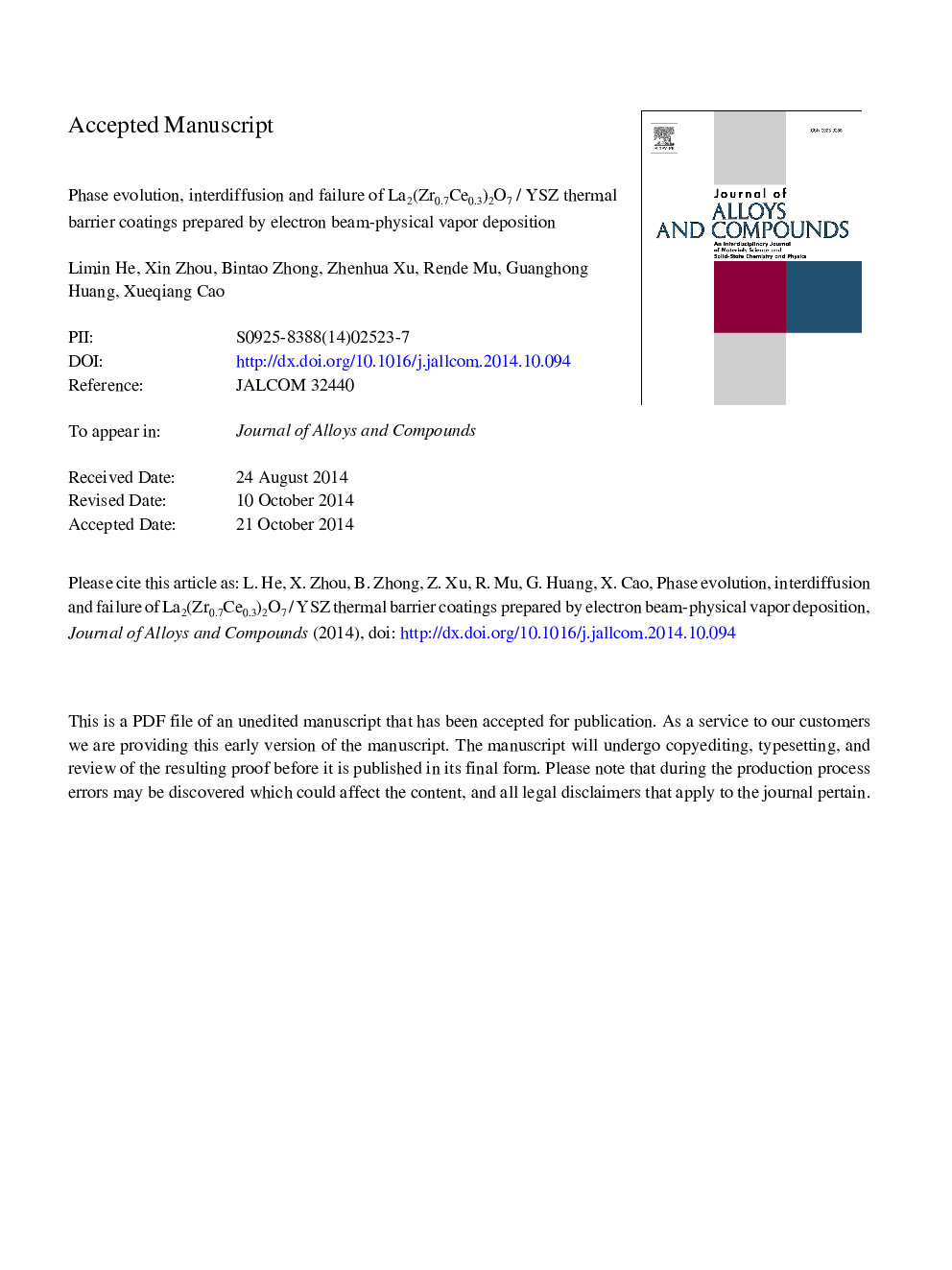| Article ID | Journal | Published Year | Pages | File Type |
|---|---|---|---|---|
| 1609802 | Journal of Alloys and Compounds | 2015 | 42 Pages |
Abstract
La2(Zr0.7Ce0.3)2O7 (LZ7C3) has attracted great interest for thermal barrier coatings (TBCs) because it presents extremely low thermal conductivity, high thermal stability and is more resistant to sintering than yttria stabilized zirconia (YSZ). In the present study, an LZ7C3/YSZ double-ceramic-layer (DCL) TBC was deposited by electron beam-physical vapor deposition (EB-PVD) and the TBC system was investigated for its phase evolution, interdiffusion and failure pattern though thermal shock test at 1373Â K. X-ray diffraction and Raman spectra results indicate that the as-deposited LZ7C3 coating transforms from fluorite to pyrochlore structure upon thermal shocking between 373Â K and 1373Â K. It seems that this phase change may have affected the durability of the DCL TBCs. The EDS mapping analysis indicates that some diffusion of Y from YSZ to LZ7C3 layer is occurred after thermal shock test. Additionally, an obvious outward diffusion of Cr from bond coat into LZ7C3 layer takes place due to the chemical reaction of LZ7C3 and Cr. The phase transformation of LZ7C3, the abnormal oxidation of bond coat, and the outward diffusion of Y and Cr alloying element into LZ7C3 coating would be the primary factors for the spallation of LZ7C3/YSZ thermal barrier coating.
Keywords
Related Topics
Physical Sciences and Engineering
Materials Science
Metals and Alloys
Authors
Limin He, Xin Zhou, Bintao Zhong, Zhenhua Xu, Rende Mu, Guanghong Huang, Xueqiang Cao,
